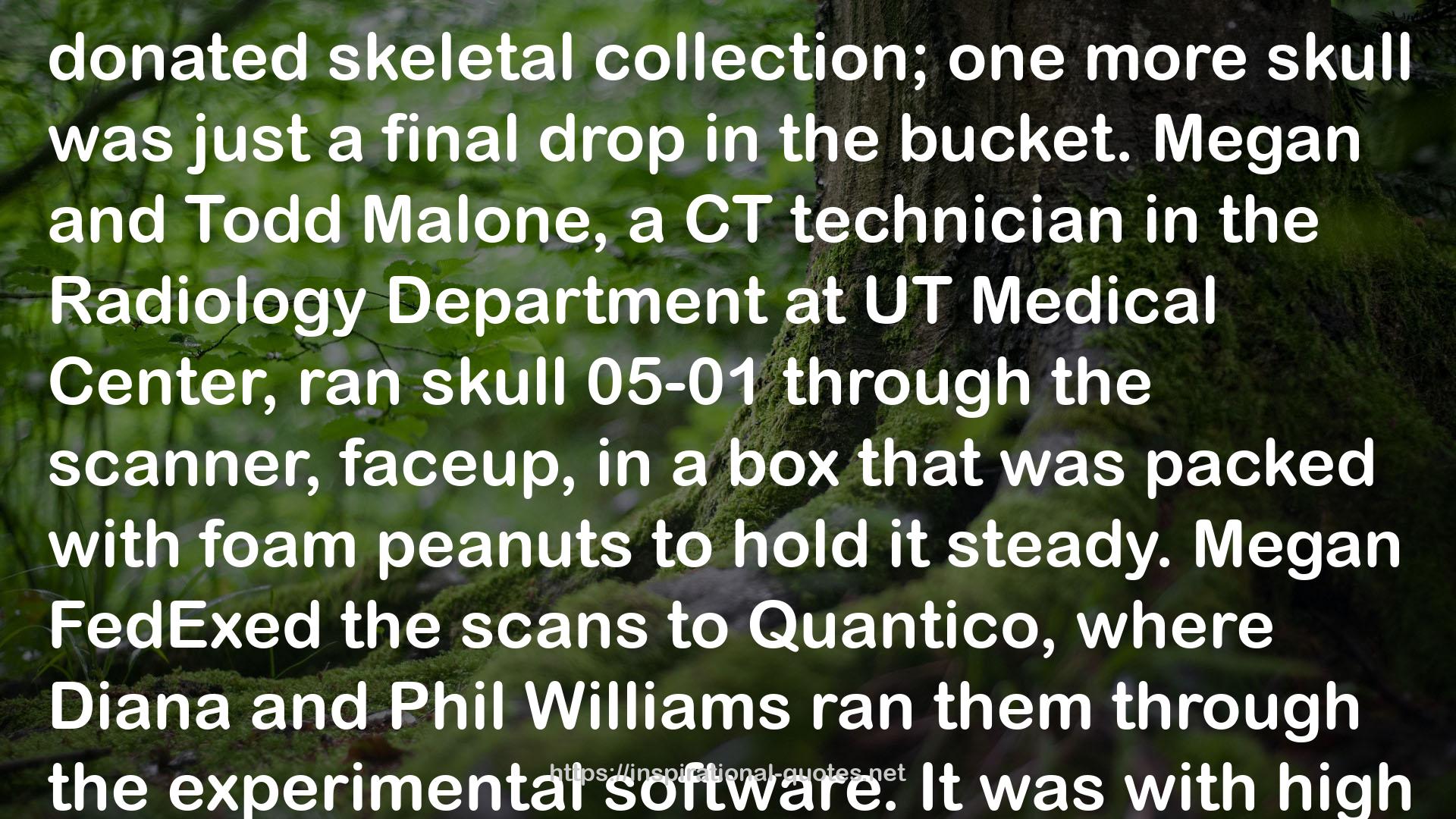" donated skeletal collection; one more skull was just a final drop in the bucket. Megan and Todd Malone, a CT technician in the Radiology Department at UT Medical Center, ran skull 05-01 through the scanner, faceup, in a box that was packed with foam peanuts to hold it steady. Megan FedExed the scans to Quantico, where Diana and Phil Williams ran them through the experimental software. It was with high hopes, shortly after the scan, that I studied the computer screen showing the features ReFace had overlaid, with mathematical precision, atop the CT scan of Maybe-Leoma’s skull. Surely this image, I thought—the fruit of several years of collaboration by computer scientists, forensic artists, and anthropologists—would clearly settle the question of 05-01’s identity: Was she Leoma or was she Not-Leoma? Instead, the image merely amplified the question. The flesh-toned image on the screen—eyes closed, the features impassive—could have been a department-store mannequin, or a sphinx. There was nothing in the image, no matter how I rotated it in three dimensions, that said, “I am Leoma.” Nor was there anything that said, “I am not Leoma.” To borrow Winston Churchill’s famous description of Russia, the masklike face on the screen was “a riddle wrapped in a mystery inside an enigma.” Between the scan, the software, and the tissue-depth data that the software merged with the "
― Jefferson Bass , Identity Crisis: The Murder, the Mystery, and the Missing DNA
